The Tribulations of a Chinaman (French: Les Tribulations d'un Chinois en Chine) is an adventure book by Jules Verne first published in 1879.
By Doug Boilesen, 2020
See Wikipedia for plot summary about a wealthy man, Kin-Fo, who thinks he has gone broke because of a bad investment, and takes out a large insurance policy that covers suicide. Kin-Fo's goal is to be able to leave money to his old mentor Wang and to Kin-Fo's fiancee La-oo. But completing his death wish gets complicated and many tribulations are endured. The phonograph plays an important role in his personal communications.
For Friends of the Phonograph the first phonograph fact of this story is that Kin-Fo was a man who "had ignored the ordinary habit of writing by hand, and for his private correspondence, had purchased one of the phonographs recently brought to great perfection by Edison." (p.40) With the phonograph he could correspond with his fiancee La-oo and since she also had a machine she could send Kin-Fo "letters" on a sheet of tin-foil 'indented' with her own voice.
The first letter we hear in the book is from La-oo to Kin-Fo (p.45):
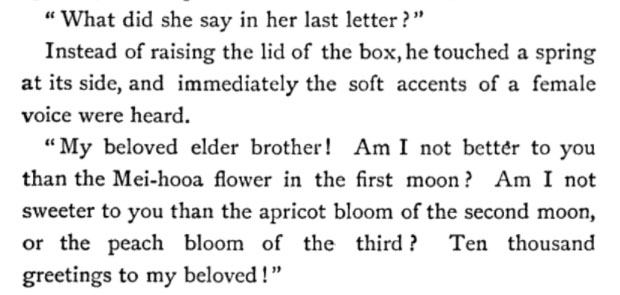
The next phonograph scene starts with La-oo anxiously awaiting a letter from Kim-Fo. But when it does come it unfortunately brings "unwelcome tidings." (pp 54-55)

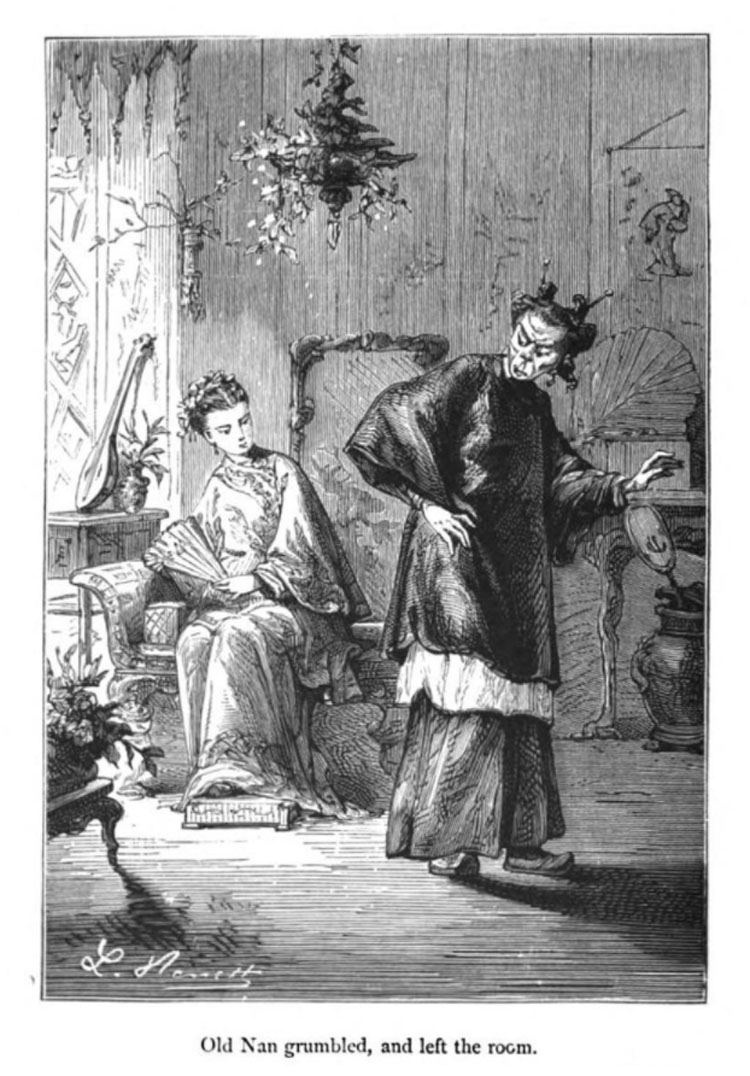
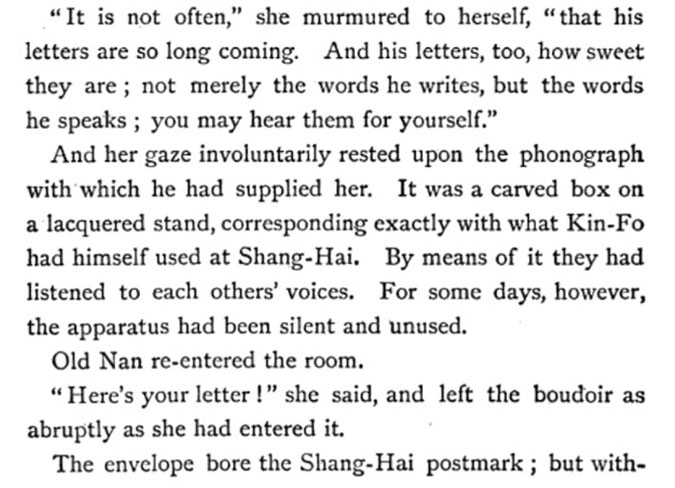
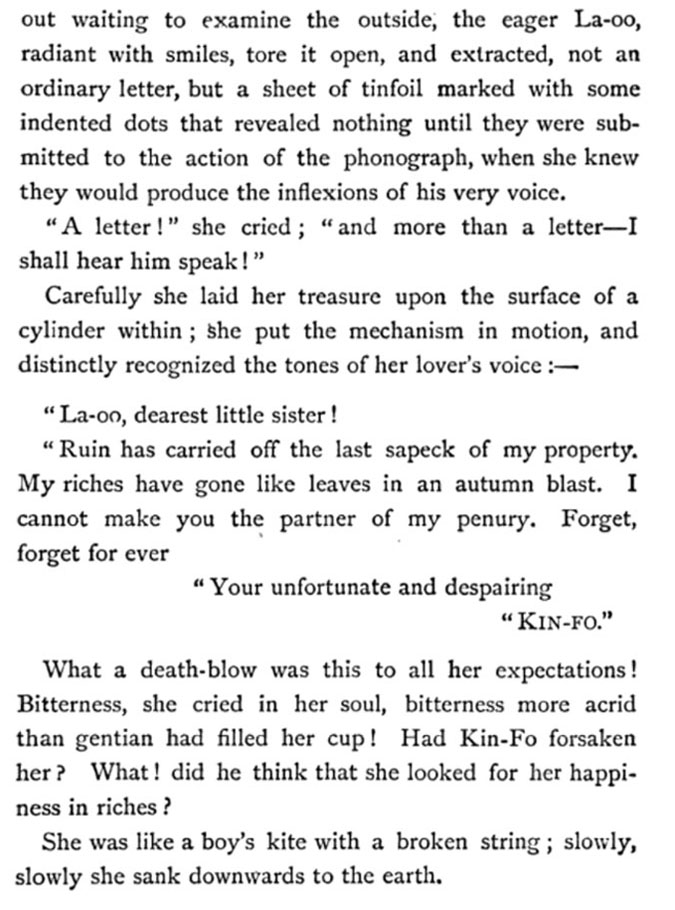
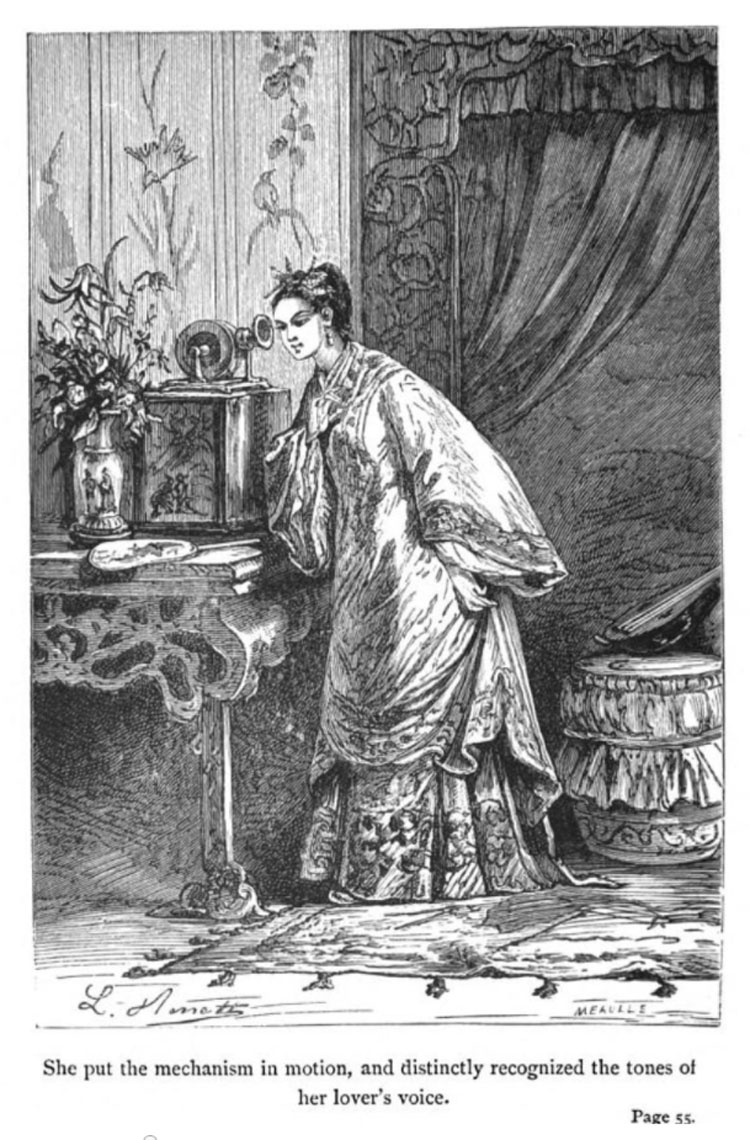
A later phonograph letter, a "phonogram," is sent by Kim-Fo to La-oo to announce the reversal of his fortunes (p.103):
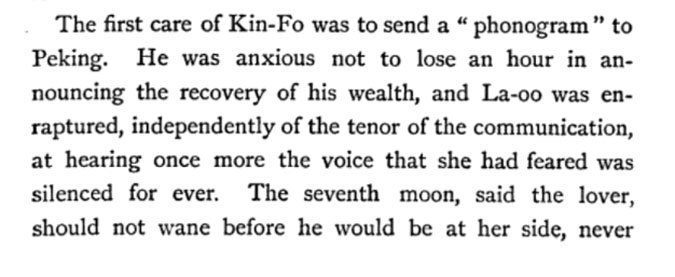
The next phonogram is spoken by La-oo as she has not heard from Kim-Fo for many days but wants to make a message for him so that he can hear it upon his return. (p.154-155)
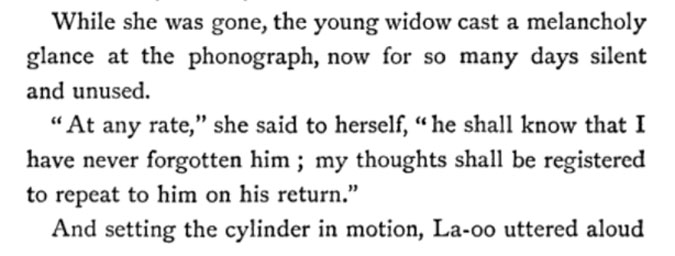
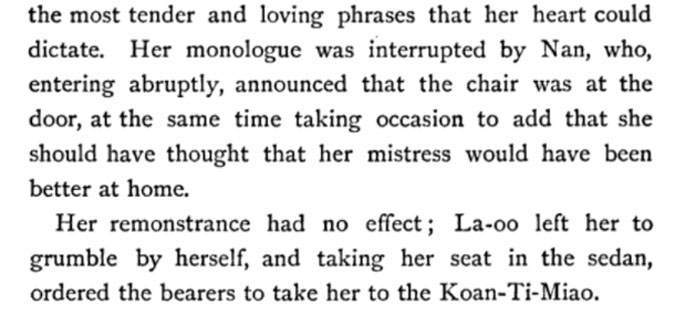
That letter would later be heard by Kim-Fo who had returned to La-oo in Peking. Nan's words would also be heard as Nan hadn't realized that the phonograph was still recording when she had abruptly interrupted La-oo's monologue, much to her regret. (pp. 159-160) - "Man-servants and Maid-servants, beware of Phonographs!"
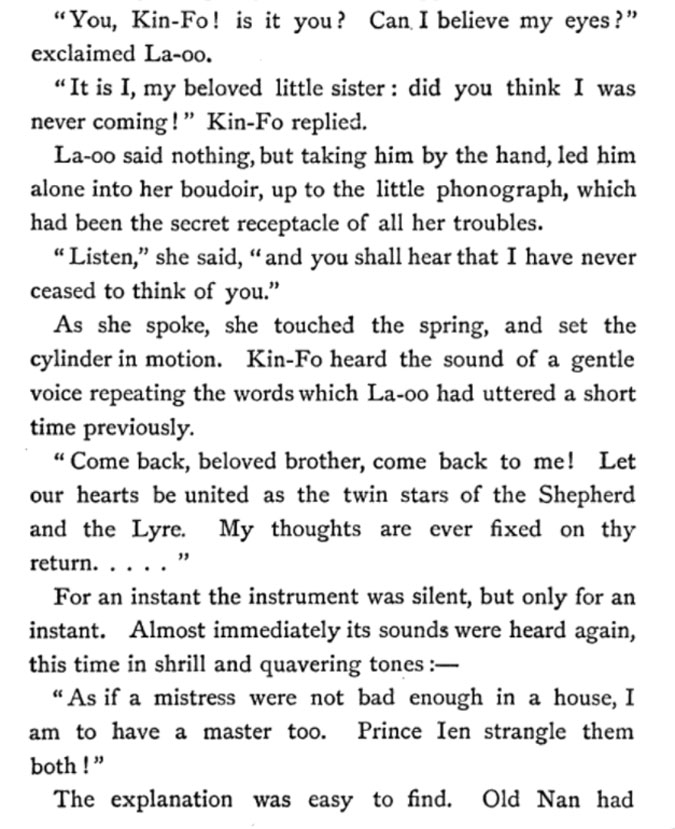
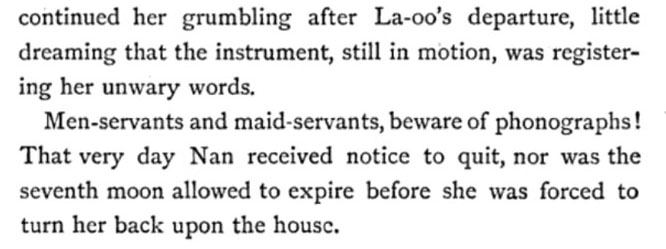
In the end the affection of La-oo and Kin-Fo was unalterable; "prosperity awaited them throughout their future life; and only by a visit to the yamen in Shang-Hai could the measure of their mutual happiness be realized." (p. 262)
It is noted by William Butcher in The Journal of Foreign Languages that the insertion by Verne of the phonograph in this novel as "a recent invention is the first time in any of his novels, as previously his preference had been for low technology like sledges or balloons or, just as often, no technology at all.)" (1)
In addition to Kin-Fo's phonograph..."there was hardly a modern scientific applicance that had not been adopted in his house; he had a telephone that placed him in communication with every department of the yament; he had electric bells fitted to every chamber;" (ibid, p.39)
A Jules Verne Factola 2:
In the September, 2022 edition of the Antique Phonograph Allen Koenigsberg wrote that instead of "leaping into fantasy" about how Jules Verne would picture a mechanical machine for vocal preservation, he "instead portrayed a specific 'Edison-Hardy' incarnation." The woodcut for Verne's story was then compared by Koenigsberg with the "period catalog" from Charles Magne for the French "Phonographe Edison" made by Edouard Hardy for Edison to show the connection.
Read "Hardy will be my man - Memory, Jules Verne, and the First Phonograph" (Allen Koenigsberg, Antique Phonograph, October 2022) for fascinating details about Edouard Hardy, Verne's Tribulation story, connections with the sheet music "Phonograph Waltzes" by two different composers, and, of course, multiple degrees of separation factolas of other related phonograph connections which Koenigsberg does so well.
Or as Koenigsberg describes his article: "a detective story of sorts, connecting early inventors and machinists, commercial sheet music, acoustic technology, and even the pinnacle of the Eiffel Tower."
Catalog from Charles Magne of Edison-Hardy Phonograph (used with permission of Allen Koenigsberg)
"The "Hardy' tinfoil models were indeed the first such phonographs to go on regular sale in France, for 200 francs ($40)." Ibid. p.24.
Woodcut illustration by Fortuné Méaulle from Léon Benett's artwork, The Tribulations of a Chinaman, p.55
Phonographia